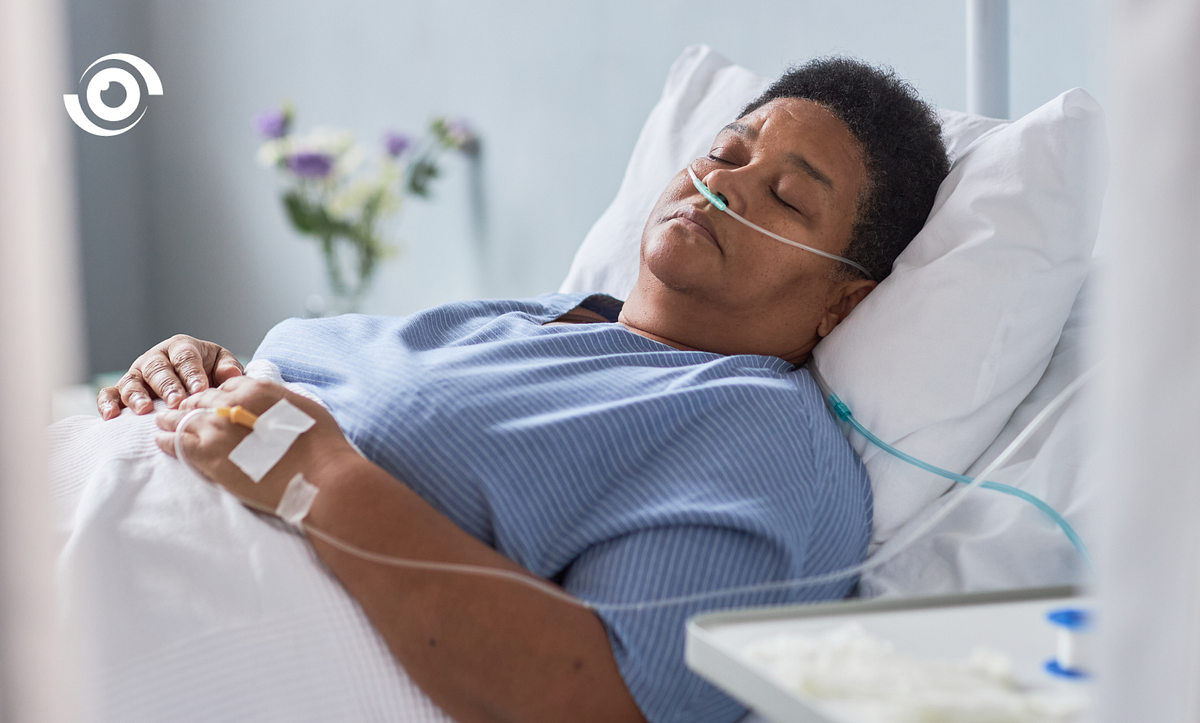Chibuike Alagboso (Lead writer)
Over 5 billion people globally lack access to safe, quality, and affordable medical oxygen services, according to the Lancet Global Health Commission on Medical Oxygen Security published in February 2025. This represents a significant access gap when compared to other essential medicines, the commission found.
Oxygen is not only vital for treating respiratory illnesses but also essential for successful surgical and trauma management. Vulnerable groups including older adults, pregnant women, infants, and newborns are especially at risk when oxygen is unavailable.
In low and middle-income countries, the situation is more worrisome; only about 30% out of the 299 million people who need oxygen for acute medical or surgical conditions receive adequate oxygen therapy.
The gap is most severe in sub-Saharan Africa, where access is critically low. To sustainably improve access, African countries must create the right environment to attract investments and collaborations for improved access to quality medical oxygen.
Medical oxygen: A lifeline for women and children
Medical oxygen is a recognised essential medicine, crucial for a wide range of conditions. For mothers and newborns, it is lifesaving. Strengthening oxygen systems could reduce in-hospital mortality rates from childhood pneumonia by up to 50% and significantly improve maternal and neonatal health outcomes.
Oxygen is a life-sustaining element that is indispensable for surgical procedures, emergency care, and the survival of newborns, children, and mothers. Hypoxemia, or low oxygen levels in the blood, can be a grave threat to life, particularly for young patients. Also, prompt access to oxygen is crucial in mitigating maternal fatalities caused by postpartum hemorrhage (PPH) or hypertension.
The early years of a child’s life are especially vulnerable. Birth complications such as asphyxia- a condition where the body is deprived of enough oxygen, leading to breathing impairment and potentially unconsciousness or death- and trauma are among the leading causes of neonatal deaths according to the World Health Organization (WHO). Reliable and quality medical oxygen make a lot of difference in improving their outcomes.
Recent trends report by WHO show that while progress has been made, reduction in maternal mortality rate remains insufficient to meet the global target by 2030. The report highlights the urgent need for consistent availability of essential medicines, diagnostics, and devices in poor countries, where 90% of maternal deaths occurred in 2023. It further notes that all maternal deaths are preventable, and strengthening health systems to address shortages of essential supplies is crucial
Why the gap?
Despite being an essential medicine with no substitute, access to medical oxygen remains inequitable. The story of Dr. Rosemary Chukwudebe’s death in 2018 due to lack of oxygen access in the facility she works is a sad reminder of this reality. Nigeria has taken steps to improve oxygen production and distribution since COVID-19 exposed Africa’s vulnerability, but sustained, long-term investment remains essential.
Dr Bamidele, a resident doctor in a Nigerian public hospital, said that oxygen is sometimes unavailable and often unaffordable, costing between NGN 1,000 and NGN 2,000 per hour.
The Lancet Commission also identified major contributors to the oxygen coverage gap as health facilities lacking basic oxygen service capacity; failure to identify oxygen need due to the unavailability of pulse oximetry; interrupted, unsafe, or otherwise low-quality oxygen care; and high costs for patients. Pulse oximeters, which help measure blood oxygen levels, are available in only 54% general hospital and 83% of tertiary hospitals across low-income countries. Primary healthcare centres (PHCs) rarely have them at all.
Mu’azu Muhammad is the Nigeria Country Champion of Oxygen CoLab. He pointed out that while significant investments were made during COVID-19, many facilities are now inactive.
Efforts are underway to transfer these investments to the private sector, but without dedicated budget lines for medical oxygen security, subnational prioritisation remains low. Over-reliance on international partners and lack of regulatory oversight on technical specifications for oxygen production further undermine sustainability, he noted.
For better quality control, the oxygen desk office at the Federal Ministry of Health and Social Welfare, the National Agency for Food and Drug Administration and Control (NAFDAC) and the Standard Organisation of Nigeria (SON) must align through the United for Oxygen Coalition, Muhammad said.
Closing the gap
The Lancet Commission calls on governments to develop National Oxygen Plan as was done by Nigeria and invest in local oxygen manufacturing and maintenance. Nigeria’s Presidential Initiative for Unlocking the Healthcare Value Chain (PVAC) is an example of national-level initiative that could provide the policy and investment environment needed to strengthen oxygen ecosystems.
Collaboration with the private sector is essential to maximise the value of oxygen plant installations. Oxygen CoLab’s “oxygen-as-a-service” model focuses on delivering oxygen concentrators for underserved health facilities. Can this be further scaled up? Numerous partners- including the Canadian government, Global Fund, and UNICEF, have supported Nigeria to set up oxygen plants. However, ongoing maintenance and sustainable financing are critical to prevent these facilities from falling into neglect.
During a 2024 policy dialogue, Dr Gilbert Shetak, Director of the National Oxygen Desk at the Federal Ministry of Health and Social Welfare, emphasised the need for sustainable financing. The National Council on Health has already laid a path for this by approving the single account for medical oxygen in health facilities.
Clearly, there are so many issues impacting health outcomes for women and children. However, addressing access to quality medical oxygen will help move the needle. It is not cheap, but it is good investment. The Lancet Commission underscores that investing in medical oxygen is cost-effective, comparable to routine childhood immunisation.
Closing the medical oxygen gap will also require robust data gathering and tracking, from production to usage. Tools like the Ten Oxygen Coverage Indicators and Access to Medical Oxygen Scorecard (ATMO₂S) can help governments monitor progress of how they are implementing WHO’s Increasing Access to Medical Oxygen Resolution.
